Within the Israeli Navy, there is a special unit of naval commandos known as Shayetet 13, also known as Flottila 13, S13, or just Bats. This unit is responsible for carrying out special operations for the Israeli Navy and is considered the elite unit of the Navy, similar to the U.S. Navy SEALs. However, nearly all information about Shayetet 13 is classified.
Introduction
In recent years, the Middle Eastern conflicts have presented numerous challenges for the Israeli Defense Forces (IDF) and directly impacted ongoing operations, particularly in specialized units such as Shayetet 13. This unit specializes in conducting sea-to-land incursions, gathering maritime intelligence, and conducting sabotage, hostage rescue, and counter-terrorism operations.
The Israeli Defense Forces, particularly its special forces, differ significantly from many Western military units due to the unique conditions and environment in which the state of Israel was established and the constant state of war it has faced since its inception. Since 1948, Israel has experienced numerous wars and turbulent periods due to British colonial policies in the region.
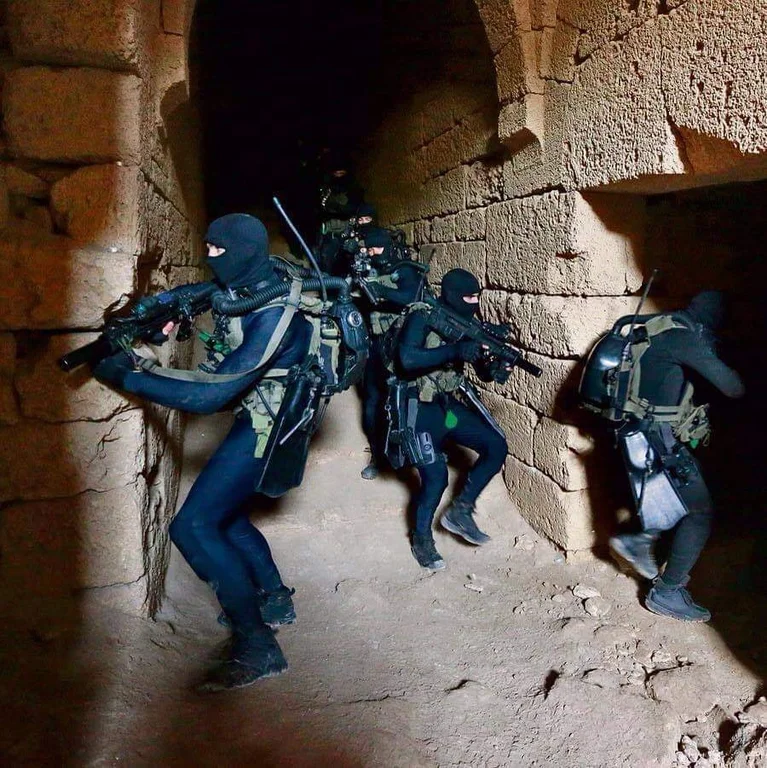
This unstable environment has driven Israel to develop one of the world’s most formidable armed forces. Military service in the IDF is mandatory for all Israeli citizens and lasts 36 months for men and 18-21 months for women.
Most conscripts serve in one of the three branches of the IDF. At the same time, the remainder is involved in the police, Israeli Border Guard (MAGEV), Security Service (SHABACH), and military intelligence service (MOSSAD). Some conscripts also serve in special units within all three branches of the IDF. The number and high level of training of these special units, as well as their status and reputation in Israeli society, are notable.
After completing initial training, recruits move on to specialize within their companies. The training process for Shayetet 13 is unique in that recruits who struggle during the basic diving course but ultimately pass with an average grade are not excluded from the advanced combat diving course. The reasoning behind this approach is that these recruits have already invested significant time in training. If they are willing (usually the case), they can join the diving and surface companies. This ensures that the unit is comprised of the top soldiers who, for one reason or another, may not have excelled in the earlier stages of training but still have the potential to succeed.
History
Shayetet 13 is a highly secretive Israeli Defense Forces (IDF) unit that was formed in 1949, shortly after the establishment of the state of Israel. Its operators, specialists in counter-terrorism and hostage rescue, are often referred to as “silent soldiers.” Over the years, they have played a crucial role in all of Israel’s conflicts, becoming more proficient with time and participating in humanitarian efforts such as the airlift of Jews from Ethiopia. Shayetet 13 is widely recognized as one of the finest special units in the world.
First part
Special unit Shayetet 13, or S13, is considered one of the top two or three Israeli special units, alongside Sayeret Matkal (Unit 262) and Sayeret Shaldag. Shayetet 13 originated in the aftermath of World War II when Great Britain maintained control over the Middle East as a colonial power. To prevent the influx of Jewish refugees into Palestine, the British military imposed restrictions on immigration. In response, Palestinian Jews began smuggling their compatriots past British checkpoints, utilizing skills that would later be recognized by the British Special Operations Executive (SOE).
The SOE recruited and trained these former smugglers and included them in its military and paramilitary formations, forming the first group of 40 Jewish divers-saboteurs. This group served as the foundation for the Haganah, a secret military organization that fought to create an independent state of Israel. The Haganah included the first so-called Pal’Mach or “strike lines” and later formed the Pal’yam or “sea companies,” which operated as part of the British forces until the end of the war.

In 1943, the tide of the North African campaign began to turn in favor of the Allies, led by Great Britain. The Allied invasion of North Africa led to the total collapse of the Italian army and the defeat of the German Afrika Korps. Following the war’s end in Africa, British interest in units comprised of Jewish saboteurs waned. However, the Haganah, a secret military organization that fought to create an independent state of Israel, continued its semi-illegal activities. After World War II’s end, many Jewish refugees once again sought to immigrate to Palestine, where they were promised a state. However, the British authorities, who were focused on preserving and strengthening their deteriorating empire, once again prohibited the arrival of Jewish settlers in Palestine.
The illegal smuggling of people resumed in response to these restrictions. The British Navy intercepted ships at sea and deported the individuals on board to a detention camp in Cyprus. At its peak, the camp held almost 30,000 Jews. In response, the Haganah decided to take armed action against the British.
The Pal’yam units, which fought for national interests for the first time, were reactivated. In the first raid by the still informal Israeli forces (trained and organized by the British), two naval saboteurs blew up two British patrol ships in Jaffa’s port, as Yitzhak Sadeh planned. This was just the beginning of a series of successes achieved by the Haganah, or Pal’yam, against British interests. In early 1945, a special sabotage group called Haoulia was established as part of Pal’yam, specifically for maritime sabotage operations. This marked the beginning of the unit, now known as Shayetet 13. In 1946, Jewish naval saboteurs successfully destroyed 13 bridges in a single night, causing significant difficulties for the British military authorities. The actions of the Haganah were not limited to Palestine. They also attacked British military installations in Cyprus, Italian ports, and other locations until the establishment of the state of Israel in 1948.
Second part
After the declaration of the state of Israel, secret military formations such as the Haganah were integrated into the newly established Israeli Defense Forces (IDF). The Haoulia unit, which became Shayetet 13 in 1950, was also placed under the jurisdiction of the Israeli Navy (IRM). From 1951 onwards, Shayetet 13 began implementing training programs and exchanging experiences with other similar naval units, such as the French Commando Hubert and the British Special Boat Service (SAS). The IRM also established another special unit called the Defensive Diving Unit (Unit 707).
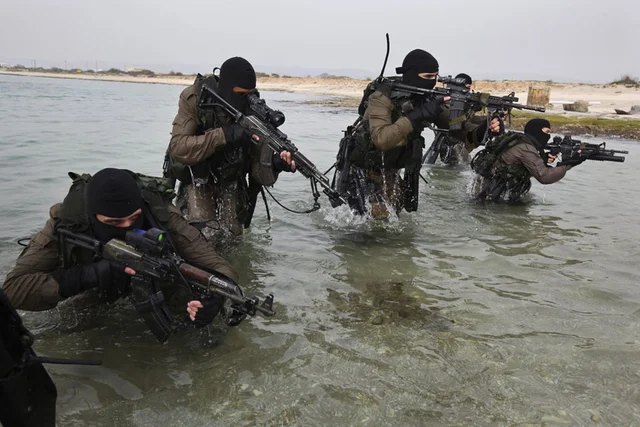
Despite undergoing intense training and participating in the Six-Day War, Shayetet 13 was not initially well-known. There were more disappointments and failures than successful actions due to military indiscipline, desire for self-assertion, and professional arrogance. The unit’s reputation was so poor that members of other special units made jokes at its expense. The rivalry between Shayetet 13 and the top Israeli special unit, Sayeret Matkal (Unit 262), worsened and contributed to the failure of certain operations. In addition, tensions between Shayetet 13 and Unit 707 grew. This hostile atmosphere played a role in the loss of the Yom Kippur War in 1973. In response, the IDF General Staff took action to address the situation. In 1975, Unit 707 was fully integrated into Shayetet 13.
In 1979, Amy Ayalon became the commander of Shayetet 13, tasked with thoroughly reorganizing the unit. Ayalon focused on improving cooperation and joint exercises with other IDF special units and strengthening international military cooperation. The unit underwent a reorganization process and emerged stronger, with clear goals and training plans for its members. After several years of hard work and training, Shayetet 13 regained its place at the top and has since participated in almost all armed conflicts that Israel has had with its Arab neighbors. The unit has also carried out many covert actions in areas under Muslim control and Lebanon, often with minimal casualties. This has contributed to the unit’s high reputation and popularity among Israeli citizens.
Organization
Shayetet 13 is highly secretive, with the details of many of its missions and the identities of active operatives kept classified. It is often compared to units such as the U.S. Navy SEALs and Britain’s Special Boat Service. Shayetet 13 is structured as an independent battalion with three specialized assault companies known as Palga.
The Assault Palga (Haposhtim) includes the best soldiers and specialists from Shayetet 13, organized into sniper, landing, and anti-terrorist platoons. It also has an anti-terrorist (AT) platoon called T4 responsible for dealing with maritime hostage situations.
Emerging from the darkness like a bat, slicing through with silent blades and smashing with rage like a grenade.
English translation of the Shayetet 13 motto
The Diving Palga (Hat’zolelim) specializes in underwater actions such as hydrographic surveillance and offensive underwater actions against enemy ports, ships, submarines, divers, sabotage, and other installations. They often support the Assault Palga by providing a landing area and surrounding water area. The Surface Palga specialized in surprise surface combat operations and raids on vessels and coastal targets using fast attack boats and in cooperation and joint combat operations with IRM surface ships and submarines. They may also transport other vessels to the area of operations.
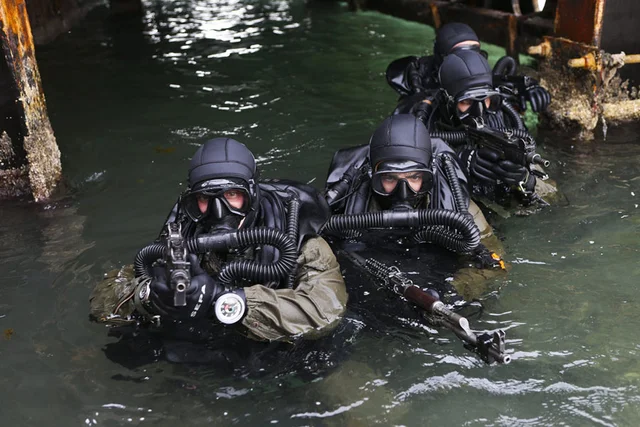
The Assault Palga is the largest, followed by the Diving Palga, with the Surface Palga being the smallest. All three companies work closely together to support each other in the execution of their missions.
Operations
In the absence of official conflicts, the Israeli Defense Forces (IDF) engage in what is known as the “war between wars,” The naval commando unit Shayetet 13 is a major player in this arena. In the past year alone, the unit has conducted numerous covert operations behind enemy lines. They often work alongside Sayeret Matkal, another secretive Israeli unit.
Shayetet 13 and Sayeret Matkal participated in Operation Bulmus 6, Operation Spring of Youth, and the assassination of Abu Jihad. Unlike other special forces units, they always cooperate rather than compete. The two elite units have likely conducted more joint operations than the three.

According to Israeli sources, Shayetet 13 has performed over 1,000 missions in the past 20 years, making it one of the most combat-experienced units in the IDF. The unit’s operations are typically kept secret, as the Israelis believe silence is their best ally. Some declassified actions include:
- The sinking of Egyptian minesweepers in Alexandria’s naval base in 1967.
- In Operation Escort in 1969, Egyptian missile boats were sunk in the Ras-Sadat maritime base.
- In Operation Raviv in 1969, Egyptian landing ships carrying tanks were sunk in the port of Ras-Soder in Sinai.
- The seizure and destruction of Egyptian military installations on Green Island, a strategic location at the southern entrance to the Suez Canal.
- Operation Aviv Neurim, also known as the Spring of Youth, in which organizers and perpetrators of the 1972 Munich Olympics massacre were located and killed in Beirut in 1973.
- The destruction of Egyptian missile boats in the Yom Kippur War of 1973 enabled the IDF and Navy to land armored and infantry forces on Egyptian territory the following day. Shayetet 13 operatives spent over 20 hours in the water individually.
- Active participation in combat during the first and second Palestinian Intifadas.
- Participation in all combat activities in southern Lebanon, the Gaza Strip, and the West Bank.
- The capture of merchant ships Santorini, Karin A, and Abu Yusuf transported weapons for Palestinian fighters in 2002.
- Active participation in battles against Hezbollah, Hamas, Al-Aqsa Brigades, and other Palestinian forces in southern Lebanon during the 2006 summer war.
Selection and Training
In contrast to many other Israeli Special Forces Units, which only accept male volunteers for their 36-month mandatory service, those who wish to join Shayetet 13 must commit to serve for at least four and a half years, 18 months longer than the standard commission. The rigorous selection process for Shayetet 13 requires candidates to be in excellent physical shape and possess solid mental grit and determination.
Even if you meet these requirements, the chances of being selected for Shayetet 13 are low. The Israeli Defense Forces (IDF) typically assigns individuals to positions based on their needs and abilities rather than allowing candidates to choose their roles. To become a member of Shayetet 13, it is essential to have a decent physical condition, incredible mental strength, and enormous determination.
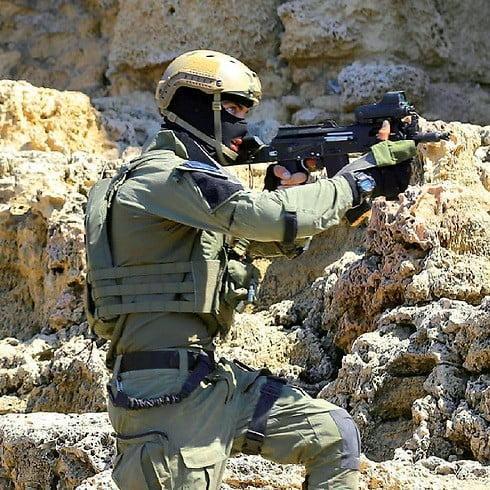
Selection
The selection process for Israel’s Special Forces Units begins during high school when future commandos undergo military indoctrination. This approach sets Israel’s special units apart from other countries, where only candidates who have completed basic infantry training are eligible for selection. In Israel, military experience or service in the Israeli Defense Forces (IDF) is not a requirement for joining the special forces. Candidates who do not make it into a special unit during the early months of their military service are unlikely to be selected in the future.
In contrast to the practice of most special forces units around the world, which recruit from among regular soldiers and gradually train and improve them in lower-level units before selecting the best candidates for the most elite units, Israeli special forces follow a different approach. Candidates who pass a rigorous selection process are immediately placed in the most elite units, where they receive long-term training and are imbued with the highest values of the Israeli state. If these candidates cannot meet the criteria for membership in these units, they may be transferred to less demanding special units or other units within the IDF. According to Israeli data, only a few isolated cases have been recorded of individuals moving from regular IDF units to command positions in Shayetet 13, the most elite unit.
Every year, after Israeli high school graduates, the process of selecting applicants for Shayetet 13 begins. On average, several hundred applicants undergo a demanding selection program called Gibush, which lasts five days and focuses on evaluating motor skills, physical fitness, and psychological endurance. Special attention is paid to assessing how candidates perform under physical exhaustion, constant effort, and lack of sleep – a continuous state of physical and psychological pressure.
The selection phase also includes written exams and interviews with psychologists and unit officers, typically conducted at the end of the phase. Of the several hundred candidates participating in the selection phase, only 50 to 100, on average, pass the physical part of Gibush. After passing psychological tests, only 20 to 25 are selected to enter Shayetet 13. The arduous training process for these individuals begins, lasting for 21 months.
Training
After being selected for Shayetet 13, soldiers begin the Masul program, a specially designed training process considered the strictest physical, professional, and mental program implemented in the Israeli Defense Forces (IDF). Upon completion of the program, recruits are awarded the unit’s official emblem (bat wings with a sword and shield) and are allowed to participate in combat activities. The 21-month training period is divided into several phases:
- Four months of basic infantry training at the Mitkan Adam military base, where the IDF’s special units have their training facilities
- Two and a half months of advanced infantry training at the IDF Officer School (Bislash) in the Negev desert
- Three weeks of advanced parachute training in which members are trained to perform high altitude – low open (HALO) and high altitude – high open (HAHO) parachute jumps at the Parachute School (a.k.a. Mara) near Tel Nof Air Base.
These initial training phases are generally completed by almost all candidates and represent a relatively more straightforward level of training. After completing the parachute course, Shayetet 13 recruits return to their home base at the Atlit naval base, where they are issued a set of personal weapons, including the American M16 assault rifle and the Russian AK-47 Kalashnikov. From this point, the second part of the training begins, during which recruits must meet the most rigorous standards.
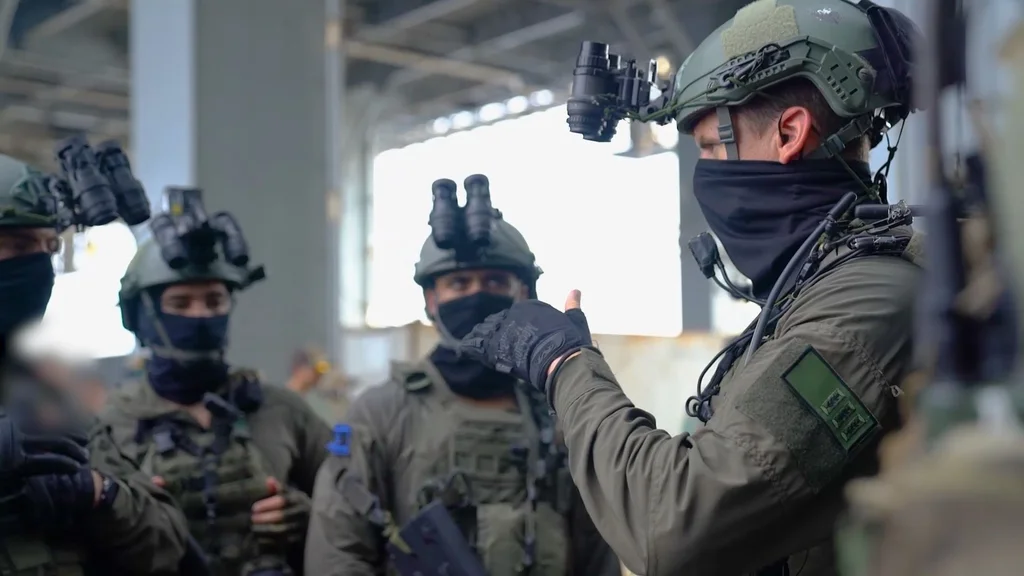
The second level of training for Shayetet 13 includes the following stages:
- Preparatory or Hamachin phase: This phase lasts for seven months and is the most challenging, with the largest number of recruits dropping out. Statistics show that most candidates who cannot meet the set criteria drop out within the first two months of this phase. It includes diving courses, instruction on underwater combat methods, training in the basic elements of water warfare, the use of various vessels, long-distance swimming, and diversionary skills. This phase includes a six-week AT (anti-terrorist) course, with three weeks at the IDF AT school and another three weeks in the field with the parent unit.
- Basic combat diving course: This phase lasts for one month and teaches soldiers the elements of combat diving, survival in cold water, diving and underwater orientation in the dark or in turbid water, and survival methods in the event of sudden underwater dangers such as landslides or increases in pressure. All dives in this phase are performed in pairs for safety and ease of mastering the tasks.
- Advanced combat diving course: During this course, soldiers learn advanced diving techniques (using diving apparatus with a closed breathing cycle), underwater demolition techniques, and conduct long-term training in adapting to the various means of transporting naval saboteurs to enemy territory, such as by sea, land, or air. This phase combines all three main groups of acquired knowledge and skills (land, air, water) in conducting combined AT operations on surface vessels, oil platforms, and coastal installations.
During the advanced combat diving course, the command structures of Shayetet 13 assign recruits to one of three specialized Palgas (teams) based on their performance: assault, diving, or surface. The best recruits join the assault Palga, while those with intermediate skills join the diving team, and the lowest-ranked recruits are assigned to the surface Palga. It’s important to note that these are young, highly motivated individuals of similar ages (18 to 21) and with similar military backgrounds, so the differences in performance are not dramatic but measurable. Israeli experience has shown that recruits are more motivated when they are aware that slight differences will determine their rank within the unit. The evaluation criteria are strict, so the differences are minimal. Even those who are ranked lower are highly trained specialists.
Naval commando operators endure one of the toughest training courses in the Israeli Defence Forces in their bid to win their coveted unit batwings insignia. The 20 months of training includes basic training with the Nahal brigade, further basic training at the unit’s central base in Atlit, which schools the troops in maritime warfare, and advanced training in combat diving, navigation, and Shayetet’s unique watercraft.
During their training, cadets train extensively in Krav Maga, a hand-to-hand combat system of Israel’s national martial art. At the end of the course, operators are assigned “professions.” Each team specializes in one of three commando roles: diving, raids, or above water.
Even after their induction into active service, Shayetet 13 commandos continue to participate in training exercises and cross-training with foreign special forces units such as the U.S. Navy SEALs. The whole process of selection and training lasts for 20 months.
How complicated and demanding but extremely dangerous the training that the members of the naval commandos of Shayetet 13 go through can be understood from one of the rare interviews given to Israeli journalists in 2004 by the then commander of the unit, known only by the code name Danny. He confirmed that from 1989 to 2004, the unit had 9 deaths in combat operations and as many as 20 deaths during combat procedures and training.
In most other Israeli special units, members serve for 3 years before being reassigned to less demanding roles in regular units of the Israeli Defense Forces (IDF). A smaller number are transferred to the reserve forces of the IDF, while the most skilled may serve in the Long Range Reconnaissance Patrol (LRRP) of the reserve infantry brigades. However, this is not the case in the two elite Israeli special forces units, Sayeret Matkal and Shayetet 13. In addition to their long term of service (6 months in Sayeret Matkal and 18 months in Shayetet 13), select members of these units may sign a second “professional” contract after their initial term of service. Only a select few are offered this opportunity, while the rest remain in the reserve forces of the unit.
Shayetet 13 stands out from other units due to their practice of holding a joint briefing and analysis session after every exercise and combat operation. During these sessions, every member, regardless of rank, can openly discuss their views on the completed task, including its strengths and weaknesses, as well as their own and others’ performance. This unit is also unique because it does not have psychologists as part of its composition.
As Commander Danny noted in an interview, “Shayetet 13 is probably one of the best units of its kind because we can do everything other units can do, but the vast majority of others can’t do what we can.” This is a testament to the unit’s contributions to the reputation of the IDF and the State of Israel as one of the best special forces units in the world.
Equipment
Shayetet 13 is an Israeli special forces unit trained in various weapons, including Glock pistols, M4 Carbines, CTAR-21s, M24 and SR-25 sniper rifles, Negev machine guns, and other modern Western weaponry. The standard personal weapon of Israeli special forces is typically a modified American M16 CAR-15 assault rifle, often paired with an M203 grenade launcher. This change came about following a major reorganization of special units after a botched operation in 1974 by Sayeret Matkal, in which mistakes and omissions, including Soviet weapons, contributed to the failure. As a result, the use of Soviet weapons was banned in special units, except Shayetet 13.
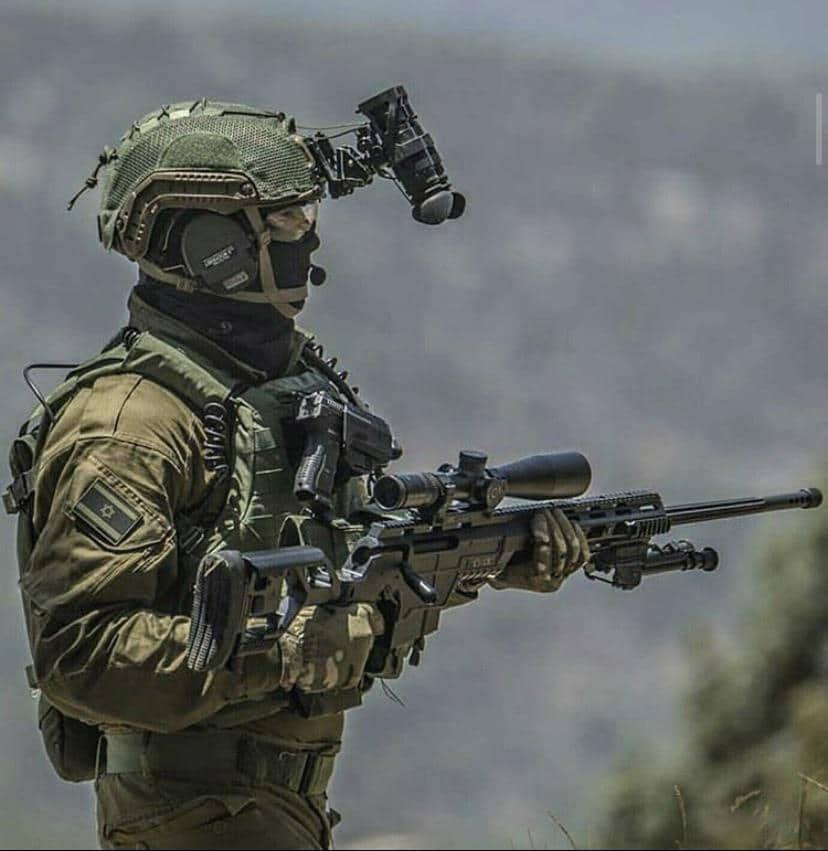
Shayetet 13 has historically used the Russian AK-47 as its primary assault rifle due to its proven reliability in harsh conditions such as underwater, saltwater, and sandy environments. Additionally, Soviet weapons allowed operatives to blend in with local populations during covert operations, providing a crucial advantage until the enemy could determine whether they were friends or foes.
In recent years, the AK-47 has become a myth within the unit and is still the first weapon recruits are trained on. However, due to its technical inferiority compared to modern Western weapons, the AK-47 is now only used in diving operations. The primary weapon of Shayetet 13 is now the modified American M16 CAR 15, which is lighter, more versatile, and more accurate, and also uses the same ammunition (5.56 mm) as the unit’s IMI Negev light machine gun.
Shayetet 13’s arsenal also includes a range of melee weapons, hand grenades, underwater weapons, and specialized weapons such as the CornerShot (which is equipped with a video camera for shooting around corners and eliminating targets without exposing the shooter to danger). Notably, Israeli special units, including Shayetet 13, do not use weapons from the German Heckler & Koch arsenal, including the HK MP5, due to a longstanding policy of not purchasing weapons from countries that have previously imposed arms embargoes on Israel.
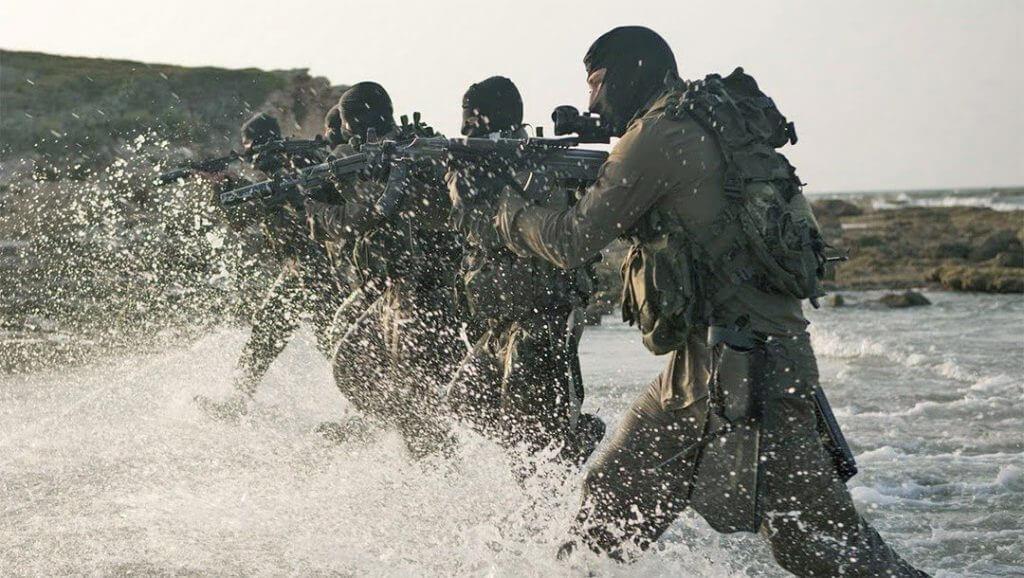

Comments are closed.